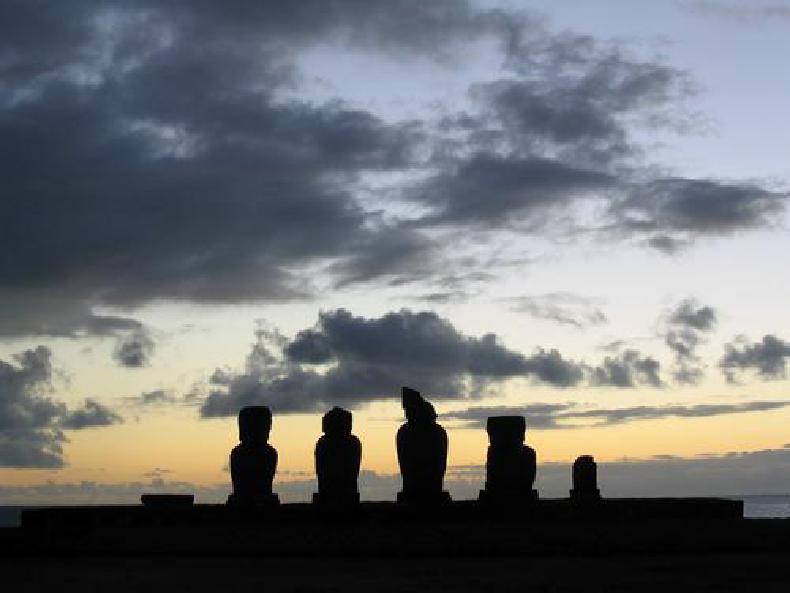Rapa Nui
Rapa Nui (commonly known as Easter Island) is a mysterious and remote place. The nearest populated landmass is 3700kms away. It is only 117 square kilometres in size, and the locals call it the ’naval of the world'.
It was discovered on Easter day in 1722, from where it got its name. Today it is still a remote place, with only two flights a week. However, that makes it an even more interesting place to visit.
Rapa Nui is a volcanic island situated in the middle of the Pacific Ocean. This is the crater of Rano Kau, one of three extinct volcanos on the island.

There aren’t many sandy beaches on the island. Most of the coast is rocky volcanic outcrops. This is a cave that were once was a large lava tube, carrying lava from the volcano into the sea.
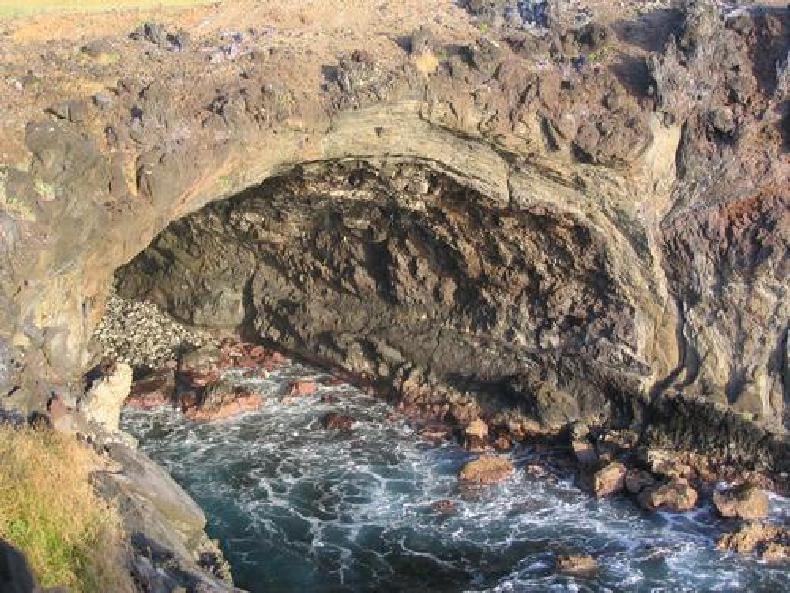
There are some ruins of small stone houses at Orongo. They are shaped like a boat. The islanders were polynesian (like others in the pacific - only that they travelled much further east than than the others).
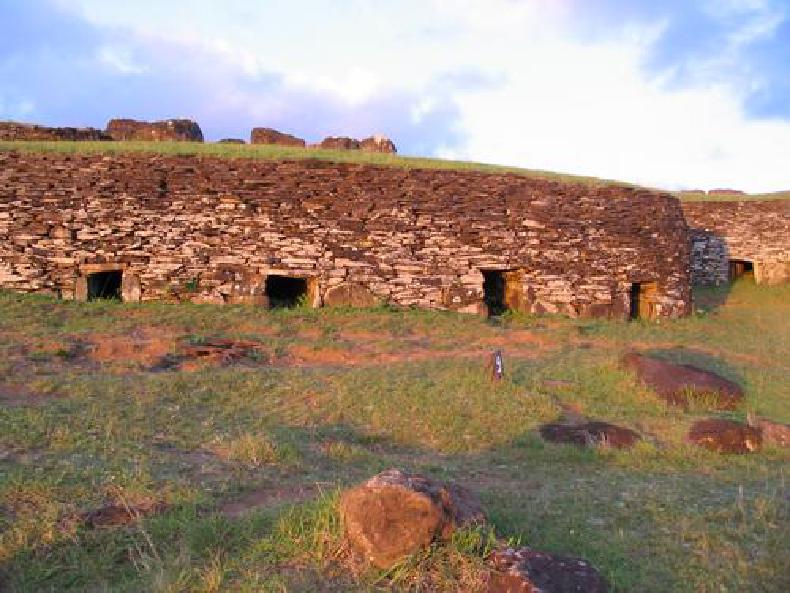
The major attraction that Easter Island is famous for are its stone moai (or statues). Many are found on raised areas, called ‘ahu’, which were village burial and ceremonial sites. There are 245 ahus on the island.
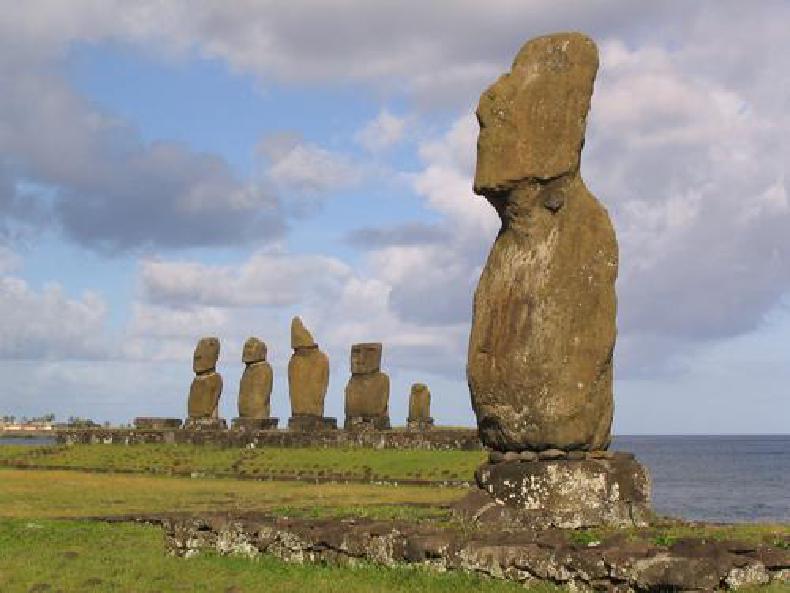
The great mystery is how and why the moai were created. Due to the lack of writing, there are no records to explain the mystery. The moai proberbly represented tribal ancestors and were created to watch over a village. However, the island became tragicly overpopulated. Resources were scarce and wars broke out. During this time, the moai were pushed over by rival tribes. All of them were pushed over, and any that are standing today have only been stood back up in modern times.
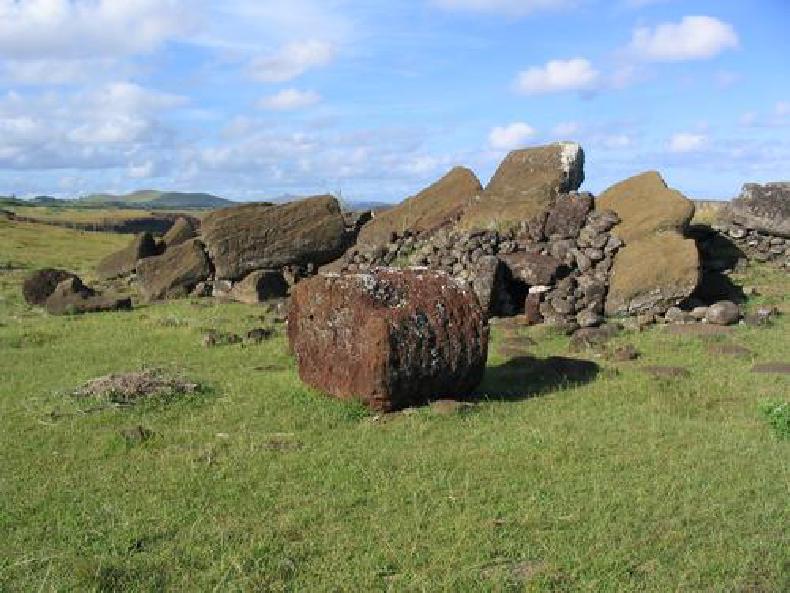
This site is very close to the village of Hanga Roa - the only settlement on the island. The ahu here is especially large and well built.
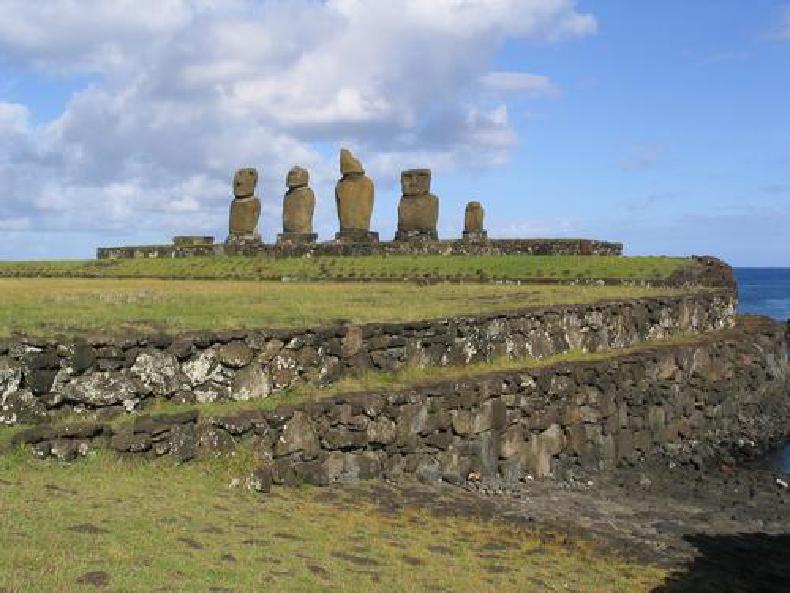
There are wild horses on the island. Introduced after contact with the outside world.
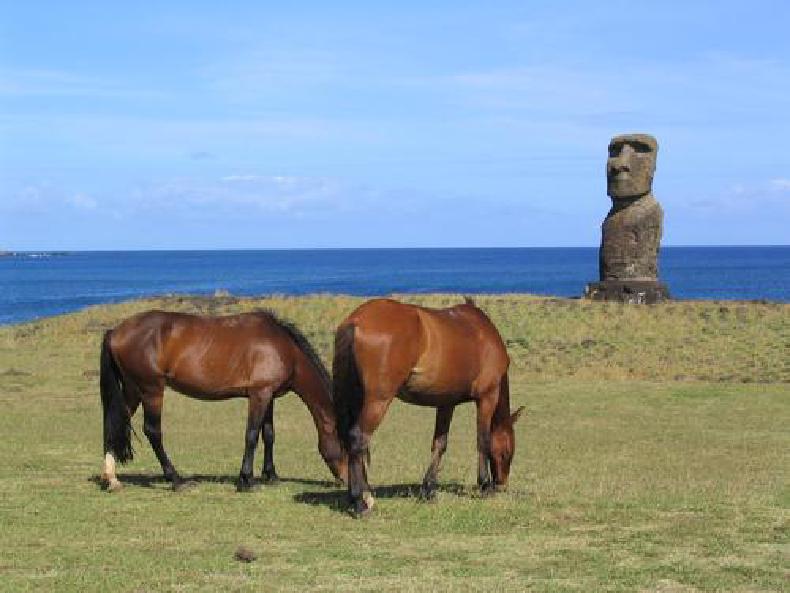
In one part of the island, a collapsed lava tube forms the basis of a sunken garden.
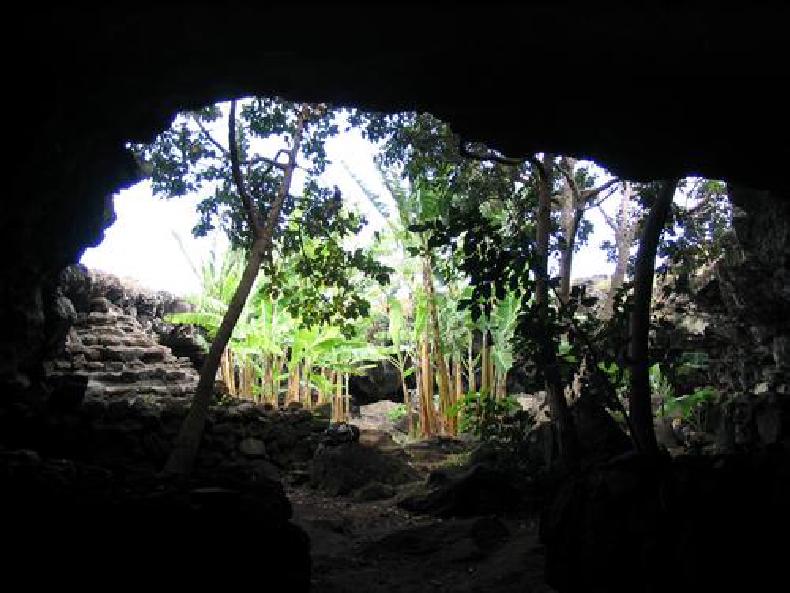
These seven moai are found inland. Most other moai are found on the coast, facing inland to watch over the villages.
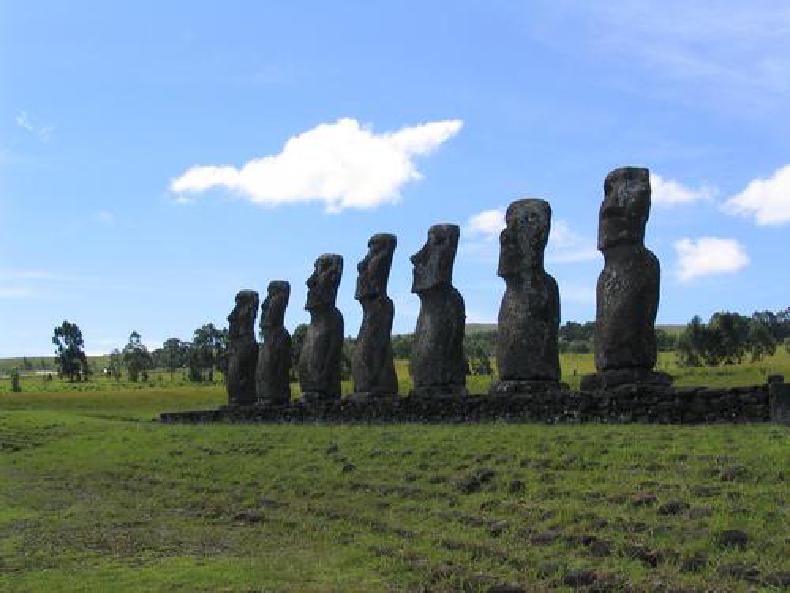
From the top of the Maunga Terevaka volcano, you can see the entire island and the horizon all around. The sense of isolation is amazing! You can see here the lack of trees on the island - cut down during the overpopulation demands on the island’s resources. Today, there are a few trees on the island: mainly euycalyptus trees introduced from Australia!
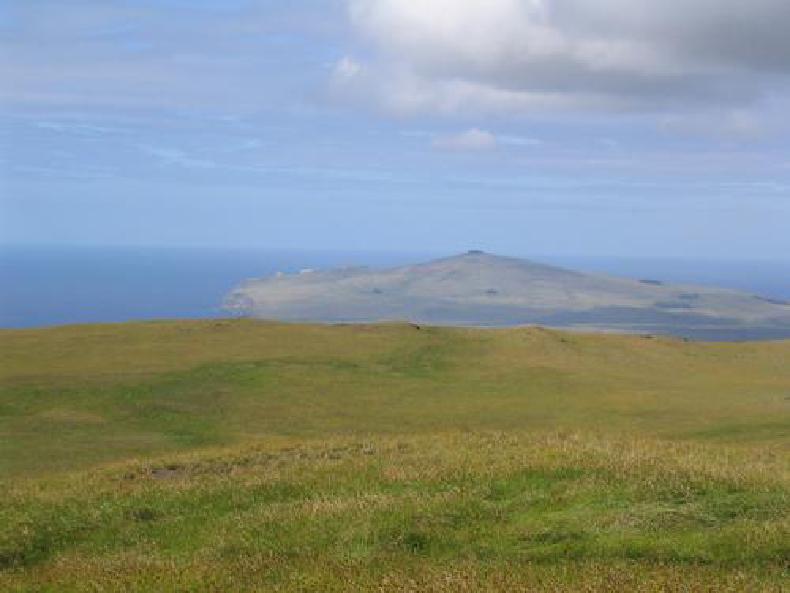
This is one of the only few beaches on the island.
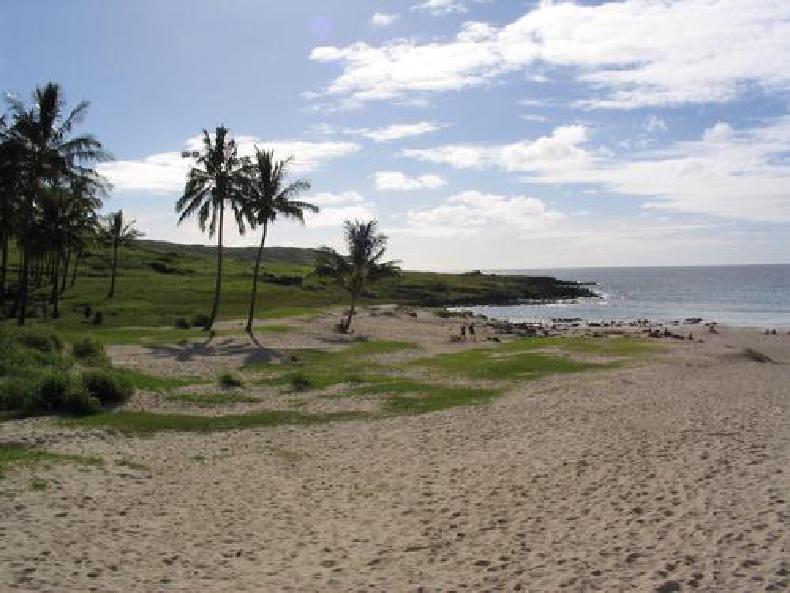
At Anakena beach, the Ahu Nau Nau stand. These sport the red decorative ’top knots’ which were carved from red coloured stone.
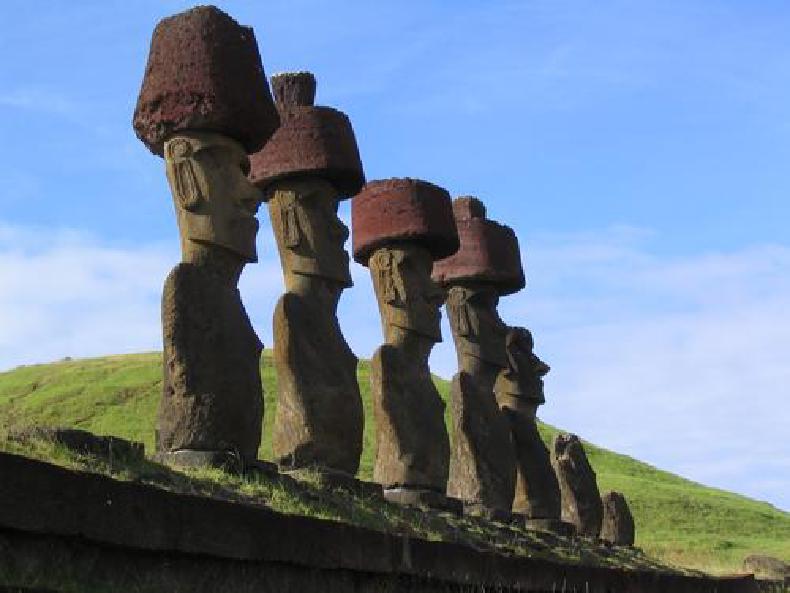
The most spectacular ahu is Tongariki. These have been knocked over (twice I believe) by tsunamis.
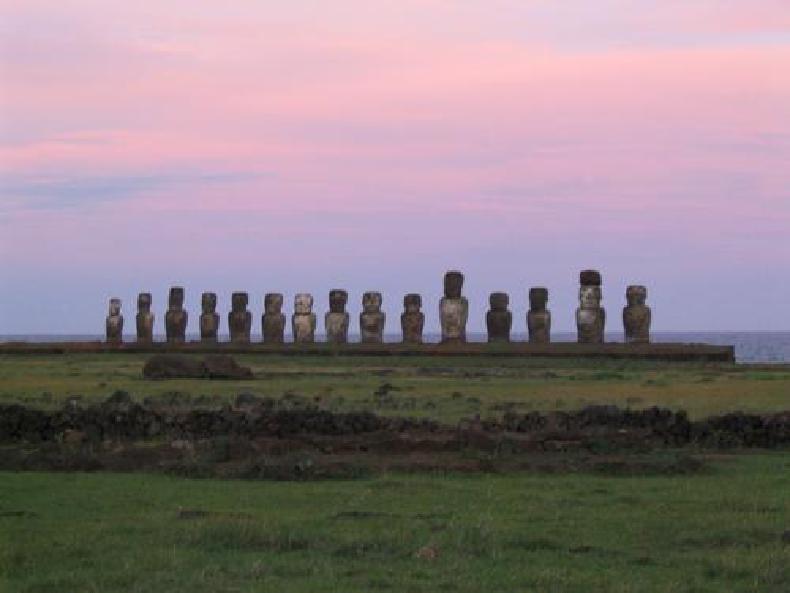
There are many moai on the island, but only a small fraction has been raised.
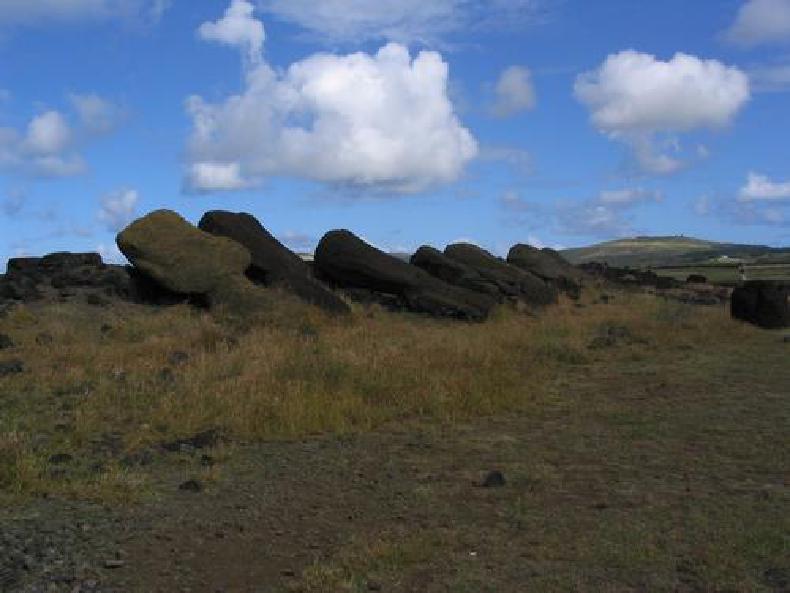
The Rano Raraku volcano is where all the moai were carved. This place is known as the nursery, and many moai can be found at its base.
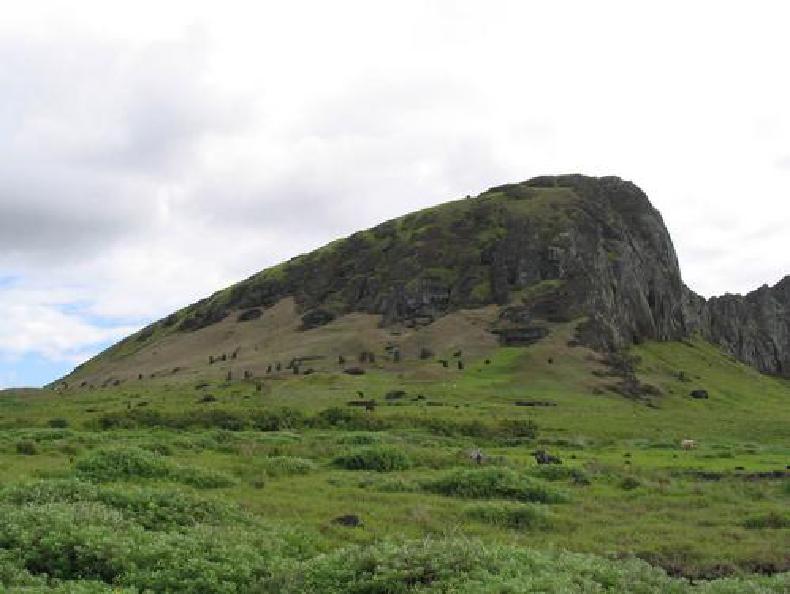
The moai were carved here and then moved to their intended location. These moai didn’t make it that far, and have been left here half buried in the ground.
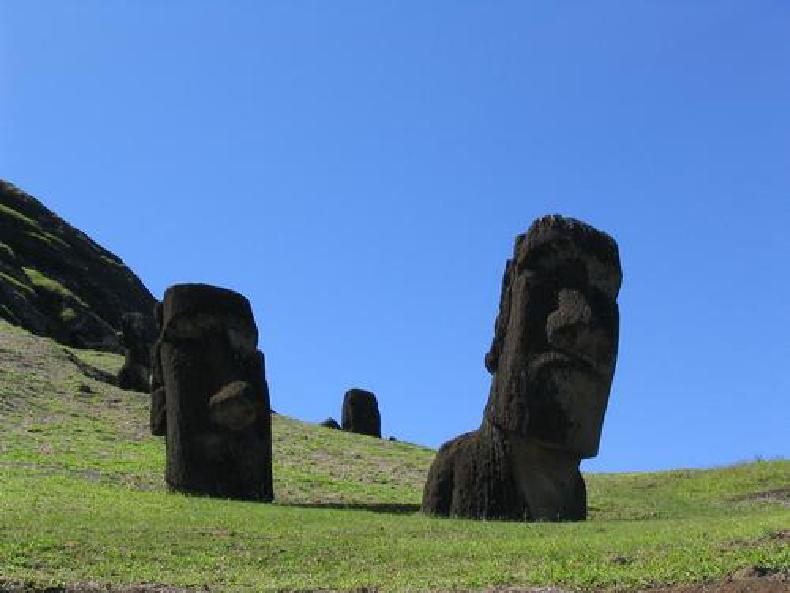
More moai can be found inside the volcano as well as around its base.
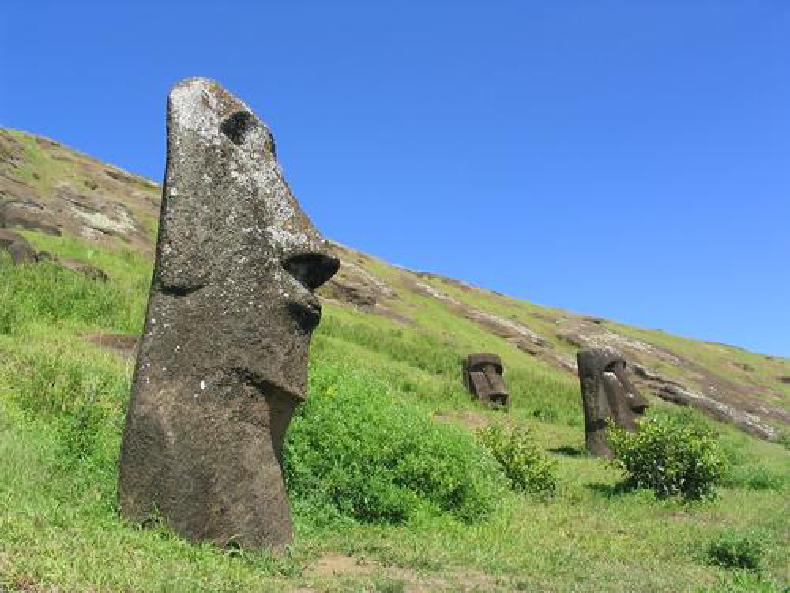
This moai is the traveller amongst them. It was taken to Japan for an exhibition and then brought back.
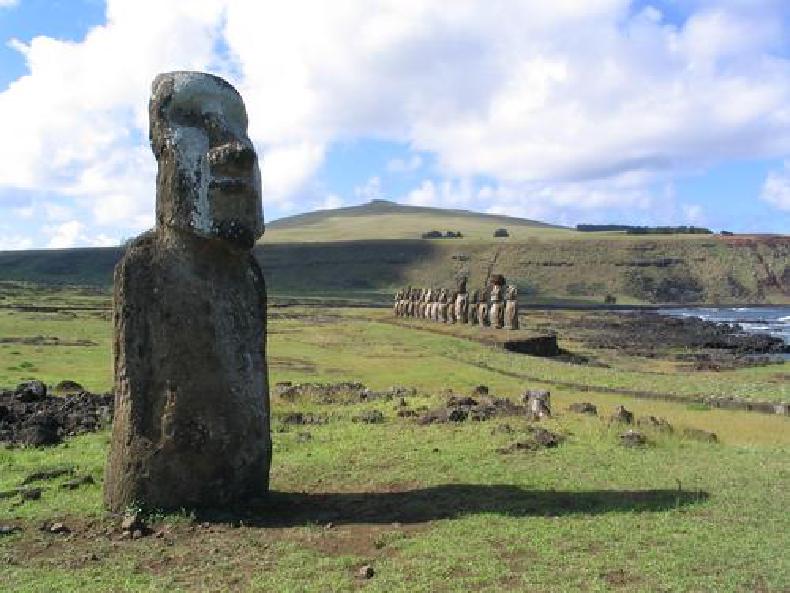
Another view of Ahu Tongariki.
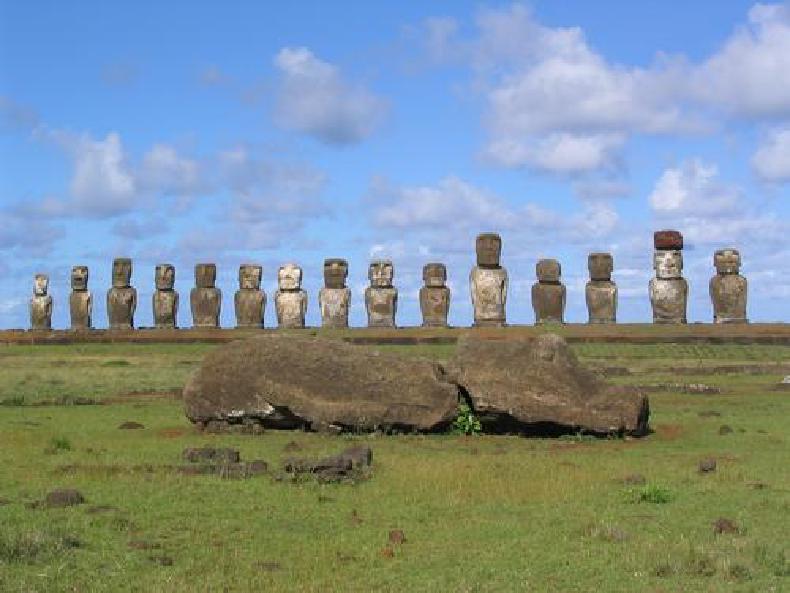
There is a lot of mystery on Easter Island. We may never know all the answers, but we must make learn from what we already know.
